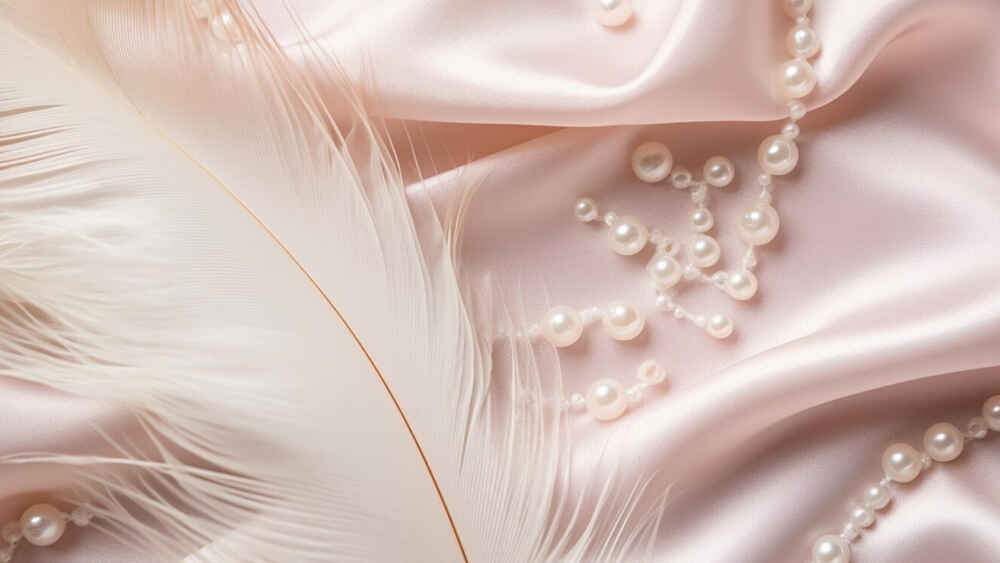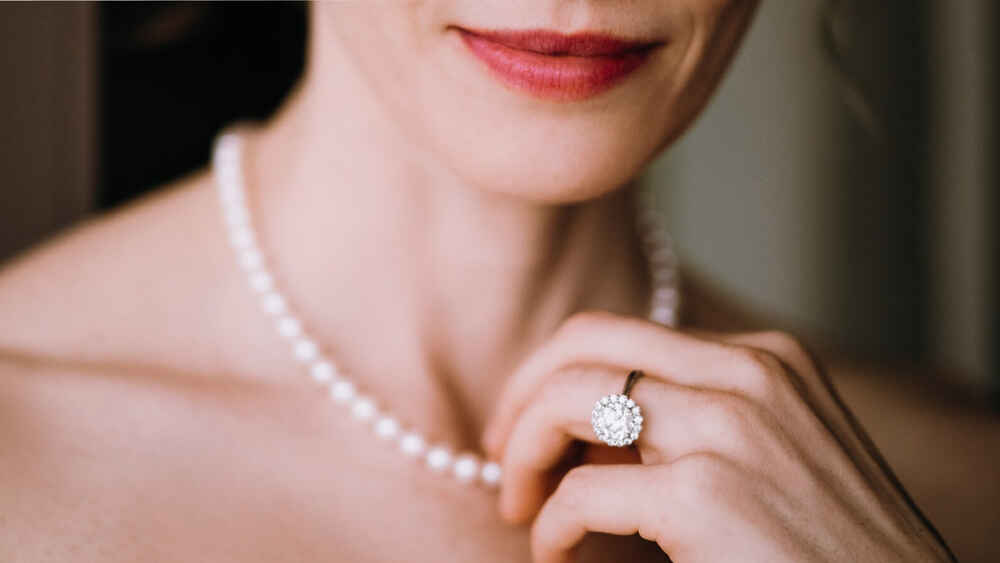Important criteria for the pearl value
Pearls grow in a wide variety of shapes - from spherical to oval and teardrop-shaped. A perfectly round pearl is considered to be the most valuable. However, depending on the piece of jewelry, extravagant and unusual shapes - often referred to as baroque in connection with pearls - can also be popular and emphasize the uniqueness of natural products.
When several pearls are used in a piece of jewelry, the interplay of size and shape is also important. The differences in size between the pearls in a piece of jewelry, such as a pearl necklace or pearl bracelet, are referred to as the gradient. Basically, the smaller the differences in the gradient, the better. However, the charm of a pearl creation can also lie in playing with the gradient.
As pearls are natural products, they can have certain blemishes on their surface. These include small cracks, folds, indentations, stains and dull spots. These marks can occur during the growing season due to external influences such as soiling or temperature fluctuations.
In principle, of course, a pearl with fewer growth marks is more valuable than one with visual blemishes. For some pearl lovers, however, growth marks are by no means undesirable: for them, they are an expression of the naturalness of a pearl.
One of the most important criteria when assessing pearls is the so-called luster, which describes the shine of the pearl. A pearl can be imagined as an onion, with the individual layers consisting of mother-of-pearl. The way in which the light makes its way through the layers and is reflected is known as the lustre. Pearls with a strong lustre are considered more valuable than those with a low lustre quality and little light reflection. With artificial pearls, only the top layer shines, as they do not consist of real mother-of-pearl layers like natural or cultured pearls.
The thickness of the mother-of-pearl layers is one of the most important criteria, as it gives an indication of the durability of a pearl. The thicker the mother-of-pearl layers, the more durable and stronger the pearls are. A pearl can be imagined as an onion in which the individual layers consist of small, hexagonal mother-of-pearl plates.
Mother-of-pearl is made up of layers of crystalline calcium carbonate and conchiolin (a protein that is the main component of the outer skin of molluscs). The overall size of a pearl does not indicate its layer thickness. The composition of the various layers has a major influence on other criteria, such as the luster and sheen of a pearl.
As only one pearl per shell can be cultivated for saltwater pearls and up to 30 pearls per shell for freshwater pearls, Akoya, Tahti and South Sea marine pearls are usually more expensive than freshwater pearls and have a higher value. Furthermore, caution is advised with fake imitation pearls, which are often labeled Akoya, Tahiti or South Sea. However, they are completely artificial products and do not have the properties of a natural or cultured pearl. As the South Sea pearl is on average the largest of the saltwater pearls, it is traded at the highest prices.
The impressive shimmer of a pearl can only be perceived because a pearl reflects different color spectra. A distinction is made between body color, overcolor and orient. However, these terms are not always used consistently. The body color is indisputably the main color of the pearl, which is usually white, grey, pink or cream.
The overcolor describes the shimmer of a pearl, which only occurs in combination with rays of light. If more than one color can be seen in this shimmer, it is sometimes referred to as oriental. As color is a matter of taste and, depending on the piece of jewelry, a different color may be the right one, the color does not have a strong effect on the value of a pearl. However, a low color intensity and a weakly pronounced overcolor can certainly reduce the value.
As with gemstones for gemstone jewelry, size is also a criterion that determines the size and price of a pearl. It is measured in millimeters: The diameter for round pearls and the height, width and depth for non-round, baroque shapes. The largest pearls are the South Sea pearls, which can have a diameter of up to 20 millimeters. The average pearl size is between six and twelve millimeters.
As the size of a pearl also indirectly determines its weight, this factor is also an indicator of the value of a pearl. The weight of a pearl is usually measured in carats, grains or momme (old Japanese unit of measurement). For natural pearls, the smallest unit used is mainly grain, and for cultured pearls carat or momme.
Caution is advised when valuing pearls, as there is no legal or even standardized system for this. However, two systems have become widely accepted in the Jewelry and pearl industry. One of these is the AAA grading system. Here, a pearl of the best quality receives the rating AAA. However, there can also be differences within this system depending on the type of pearl and the appraiser. The system for evaluating an Akoya pearl can be used as an example:
» AAA: Highest quality level. The pearl has a strong lustre, is round and the surface is 95% free of growth marks. The thickness of the mother-of-pearl layers is at least 0.7 mm.
» AA+: Second highest grade. The pearls are almost flawless and have a maximum of 10% surface features, a lustrous luster and have at least 0.5mm thick permut layers
» AA: At least 80% of the surface is free of nicks, scratches or other marks. The luster of the pearl is shiny and the permut layers are at least 0.35mm thick.
» A+: The pearl already has a very slightly unround shape. The surface is up to 70% free of features and the nacre layers are at least 0.2mm thick.
» A: The shape is not round and the luster is not very pronounced. The mother-of-pearl layers are thinner than 0.2 mm.
Important: This exemplary table is for guidance only. As there is no standardized and binding scale, there are deviations depending on the grading institute. Furthermore, the criteria are often individually adapted to the pearl types; the A+ unit is often omitted for South Sea and Tahitian pearls.
Another system for grading pearls is the A to D scale, which is also known as the "Tahitian Grading System" as it is mainly used in this region. An A is roughly equivalent to AAA. However, as these ratings are not prescribed by law, dubious retailers can deviate from them. It is therefore common to find a pearl declared as AAAA (four A's), even though an AAA cannot be graded according to the standardized system.








